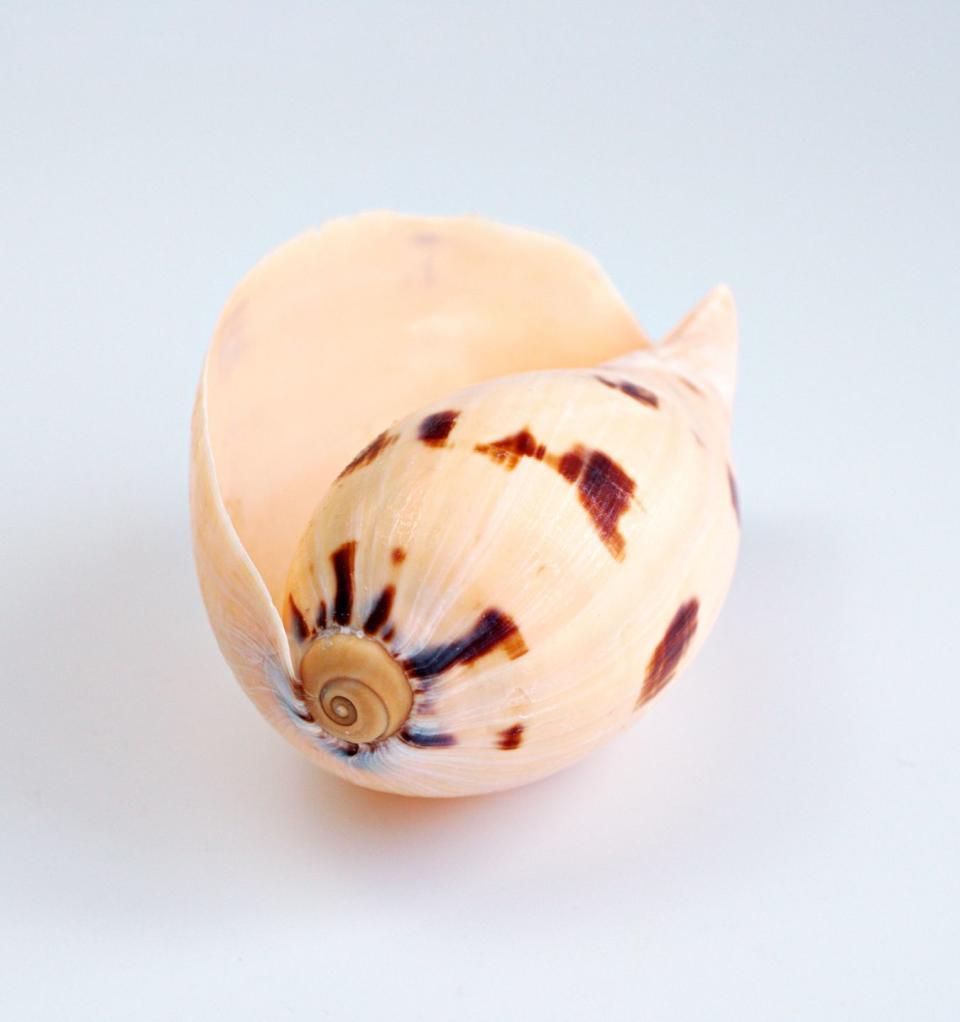The Rarest Pearl of All? It's Called the Melo Melo

It can be difficult, amid the headlines of LVMH’s $16 billion acquisition of it, to remember that Tiffany & Co. started as a small family company—one with treasure hunting in its DNA. Charles Lewis Tiffany saw opportunities in new lands, opening a Paris store in 1868, snagging the biggest yellow diamond in the world from South Africa in 1877, and buying out the auction of the French crown jewels for his provenance-obsessed American heiress clients the same year.
And he could spot great talent. Long before the company became known for collaborations with Elsa Peretti and Paloma Picasso and Jean Schlumberger, the founder enlisted a co-conspirator in rare stones, a man named George Kunz. Kunz, like a dapper Indiana Jones, scoured the world for rare and intriguing gems and championed the use of them in an otherwise diamond-dominated jewelry palette: kunzite (named after him), morganite (named after his client J.P. Morgan), sapphires from Montana, tourmalines from Maine, Mexican opals, and Mississippi pearls.

Kunz found another willing partner in Louis Comfort Tiffany, the founder’s son, who took over jewelry design after his father’s death (having made a name for himself in glass design). Louis Comfort’s vision was firmly in the Art Nouveau tradition, and he was adamant about finding rare stones that could reflect the colors of nature. Kunz accomplished this mission, procuring moonstones and black opals and demantoid garnets that brought leaves and light and petals to life.
But even that dynamic duo could not make a Melo Melo happen. This species of pearl is born strictly at the whim of Mother Nature—which is perhaps the reason there were gasps heard during the virtual presentation of the Tiffany Blue Book: Colors of Nature collection when an enormous orange orb dangling from a row of diamonds came onto the screen. But let Victoria Wirth Reynolds, Tiffany’s current chief gemologist, tell the story.
Stellene Volandes: How often does one come across a Melo Melo pearl?
Victoria Reynolds: “Rare” is truly an understatement. Taking decades to grow in Melo Melo sea snails, the most prized Melo Melo pearls are revered for their large size, warm, orangish-yellow color, and silky, porcelaneous luster. Melo Melo pearls, like conch pearls, are not true pearls, as they are not made of nacre. And they occur only naturally, making them even more special as untouched miracles. This Melo Melo pearl possesses what is perhaps the most beautiful feature of these exquisite pearls, something only 1 percent of Melo Melo pearls exhibit: the flamelike markings that dance across the surface.

SV: What did you do when you found it?
VR: We found this 95-carat Melo Melo pearl several years ago, and, given its scarcity and beauty, we immediately knew it would be perfect for the Sea chapter in Colors of Nature, and that it would inspire an exceptional design.
SV: How do you design around a specimen as rare as this one?
VR: Very thoughtfully! Our design team wanted to elevate this superlative pearl, and its perfect shape was the ideal silhouette for this necklace.
SV: How does this particular design let the Melo Melo pearl speak for itself?
VR: The pearl is dramatically suspended from an 18K yellow gold chain, with more than 24 total carats of square diamonds interspersed among the links. This chain undulates and moves with remarkable fluidity and scintillation, adding texture and flashes of brilliance, but the centerpiece is, of course, this extraordinary Melo Melo.
SV: Tiffany and pearls: How far back does that combination go?
VR: Tiffany has a long-standing history with pearls, both nacreous—from oysters and mollusks—and non-nacreous, like Melo Melo pearls. Pearls of all kinds have been used in Tiffany jewelry for more than a century. We’ve fallen in love with Melo Melo pearls, and we recently began showcasing them in our Tiffany Blue Book high jewelry designs. We’re proud to continue this legacy with this striking pendant in the 2021 collection.
Pearls: A Power Glossary
1. The first question a connoisseur will ask when presented with a pearl: “Natural?”
Each of these vanishingly rare specimens—a jewelry holy grail—is exactly what its name implies, a pearl that occurs organically within a mollusk without any interference from man. Sand floats into an oyster, and to protect itself the oyster secretes thousands of layers of nacre, which forms a pearl. The pearl Cleopatra downed? Natural. The ones in Elizabeth I’s Armada portrait? Natural. The La Peregrina pearl, which sold for $11 million in the Elizabeth Taylor auction at Christie’s? Natural. Finding some for yourself? Almost impossible. (But check auctions anyway!)
2. So where do all those pearls—like the ones we saw at the Biden inauguration—come from?
From a process invented by Kokichi Mikimoto at the end of the 19th century, after demand for pearls and changes to the oyster ecosystem almost completely wiped out the supply of natural ones. Mikimoto’s innovation introduced an irritant into the mollusk, and layers of nacre formed around it, just as in the natural process. Demand has exceeded the supply of natural pearls ever since; the cultured variety satisfied the desire.
3. Melo Melo pearls are, in some ways, beyond natural.
First, they are found not in oysters but in large sea snails of the family volutidae, which are occasionally spotted in the South China Sea and off the coast of Myanmar. The pearls take their own sweet time to form within their gastropod creators. Orange ones are especially elusive; to find a single one you need to search through several thousand shells. And even then, maybe not.
This story appears in the March 2021 issue of Town & Country.
SUBSCRIBE NOW
You Might Also Like

